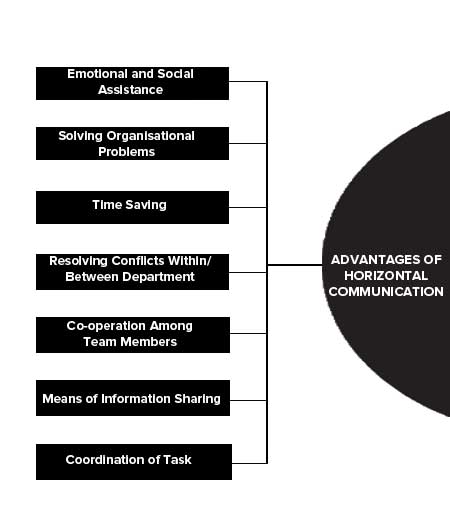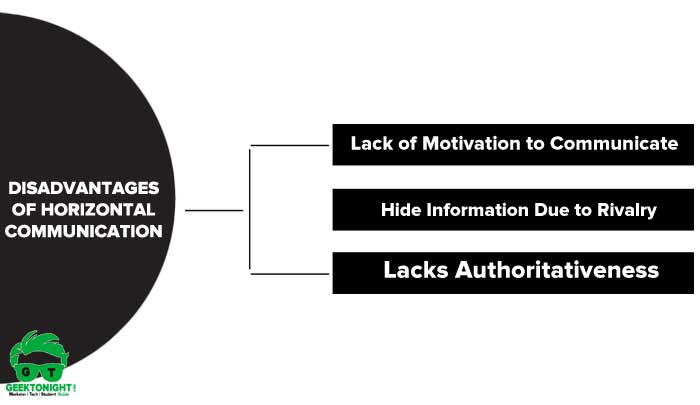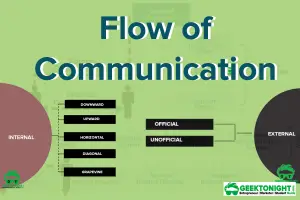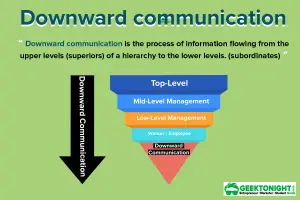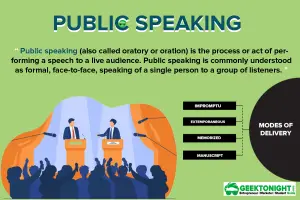What is Horizontal Communication?
Horizontal communication takes place between two or more persons who are working at the same levels it is known as horizontal communication.
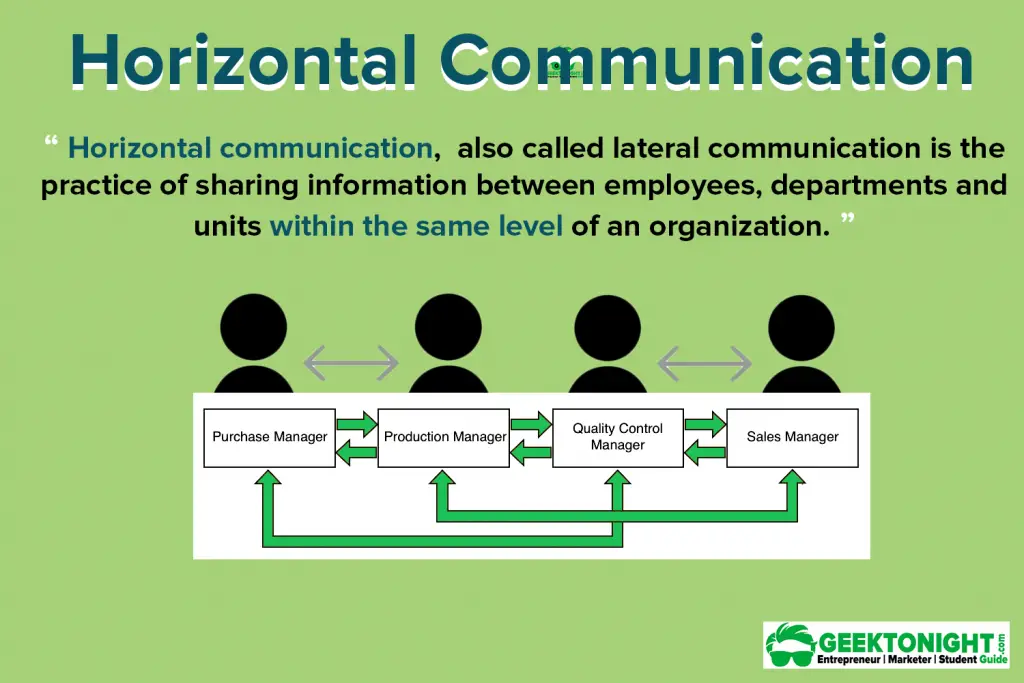
Table of Content
Horizontal communication is the flow of information across departmental boundaries, either laterally or diagonally.
Horizontal communication is a communication among people at the parallel or same level, position, rank or statues people of the organization.
Horizontal communication is the communication that flows laterally within the organization, involves persons at the same level of the organization. Horizontal communication normally involves coordinating information and allows people with the same or similar rank in an organization to cooperate or collaborate.
Horizontal Communication Definition
Definition: Horizontal communication relates to messages communicated among people on a similar level of the hierarchy.
Horizontal Communication Example, in terms of the workplace, if two board members raise an issue or if two supervisors have a discussion then this is termed as horizontal communication.
Horizontal Flow of Communication
Horizontal communication generally involves coordinating information and permits people with the same rank in an organisation to collaborate or cooperate.
The graphical presentation of horizontal communication is shown in Figure
Figure shows the Horizontal Flow of Communication where messages or information flows among the similar or same level positions of people in the organisational structure.
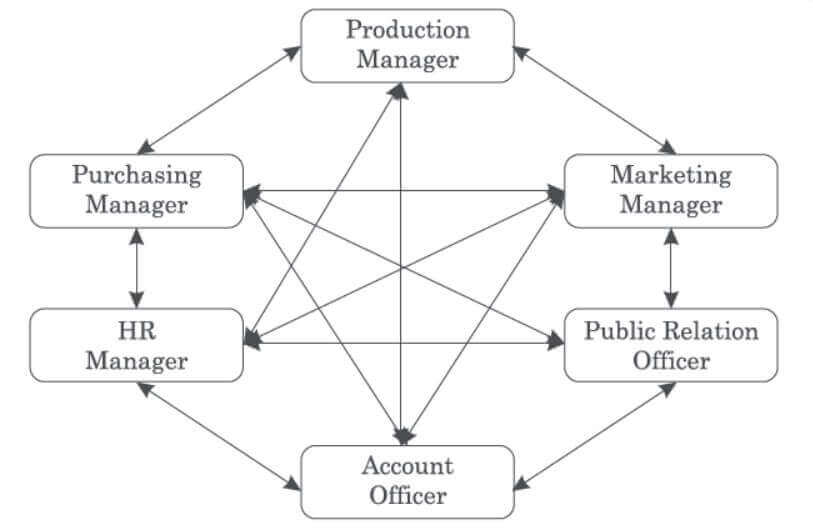
Following are the essentials of effective horizontal communication:
- Direct supervision
- Act as Lubricant
- Recognition
- Clear understandability
- Emergency communication
- Interdepartmental communication increase
- Discipline
Direct supervision
To make the communication system more effective a manager should persuade the employees by supervising.
Act as Lubricant
To ensure effective communication, departments must be developed in a way that they act as lubricants in the process of effective horizontal communication.
Recognition
To make horizontal communication effective top executives must recognise it is a useful and realistic means to exchange a message.
Clear understandability
Care should be taken that managers have a clear understanding that horizontal communication is a functional part of the total process of communication.
Emergency communication
To make it effective this communication system should be considered a form of emergency communication to affect a quick resolution to a particular problem.
Interdepartmental communication increase
To make it effective, organisational structure should be made in such a manner that the opportunity for inter-departmental communication can be confirmed.
Discipline
Discipline should be maintained strictly at each level so as to maintain effective communication, otherwise management experience gaps in the working atmosphere.
Advantages of Horizontal Communication
The advantages of horizontal communication are as follows:
- It provides emotional and social assistance to the organisational members.
- It helps in solving various organisational problems.
- It is time-saving.
- It can also be used for resolving conflicts of a department with other department or conflicts within a department.
- It facilitates co-operation among team members.
- It is a means of information sharing.
- It facilitates coordination of the task.
Disadvantages of Horizontal Communication
The major disadvantage of horizontal communication is that as the responsibility is spread out over team members and project leaders, there is very little real authority.
This can result in a loss of control, which can slow productivity when things go wrong. It can be very problematic to change from a vertical to a horizontal structure.
- There is a lack of motivation to communicate
- Usually, they hide information due to rivalry between them
- It lacks authoritativeness
Business Communication Notes
(Click on Topic to Read)
Reference
- Business Communication: “ K.K. Sinha, Golgotia Publishing Company.
- Business Communication: “M.K. Sehgal, Vandana Khetrapal, Excel Books.
- Essentials of Business Communication: Rajendra Pal, J.S Korlahalli, Sultan Chand & Sons.
Go On, Share & Help your Friend
Did we miss something in Business Communication Tutorial or You want something More? Come on! Tell us what you think about our post on Horizontal Communication | Business Communication in the comments section and Share this post with your friends.
Business Communication Notes
(Click on Topic to Read)
- What is Business Communication?
- What is Communication?
- Types of Communication
- 7 C of Communication
- Barriers To Business Communication
- Oral Communication
- Types Of Non Verbal Communication
- What is Written Communication?
- What are Soft Skills?
- Interpersonal vs Intrapersonal communication
- Barriers to Communication
- Importance of Communication Skills
- Listening in Communication
- Causes of Miscommunication
- What is Johari Window?
- What is Presentation?
- Communication Styles
- Channels of Communication
- Hofstede’s Dimensions of Cultural Differences and Benett’s Stages of Intercultural Sensitivity
- Organisational Communication
- Horizontal Communication
- Grapevine Communication
- Downward Communication
- Verbal Communication Skills
- Upward Communication
- Flow of Communication
- What is Emotional Intelligence?
- What is Public Speaking?
- Upward vs Downward Communication
- Internal vs External Communication
- What is Group Discussion?
- What is Interview?
- What is Negotiation?
- What is Digital Communication?
- What is Letter Writing?
- Resume and Covering Letter
- What is Report Writing?
- What is Business Meeting?
- What is Public Relations?
Business Communication Notes
(Click on Topic to Read)
- What is Business Communication?
- What is Communication?
- Types of Communication
- 7 C of Communication
- Barriers To Business Communication
- Oral Communication
- Types Of Non Verbal Communication
- What is Written Communication?
- What are Soft Skills?
- Interpersonal vs Intrapersonal communication
- Barriers to Communication
- Importance of Communication Skills
- Listening in Communication
- Causes of Miscommunication
- What is Johari Window?
- What is Presentation?
- Communication Styles
- Channels of Communication
- Hofstede’s Dimensions of Cultural Differences and Benett’s Stages of Intercultural Sensitivity
- Organisational Communication
- Horizontal Communication
- Grapevine Communication
- Downward Communication
- Verbal Communication Skills
- Upward Communication
- Flow of Communication
- What is Emotional Intelligence?
- What is Public Speaking?
- Upward vs Downward Communication
- Internal vs External Communication
- What is Group Discussion?
- What is Interview?
- What is Negotiation?
- What is Digital Communication?
- What is Letter Writing?
- Resume and Covering Letter
- What is Report Writing?
- What is Business Meeting?
- What is Public Relations?


